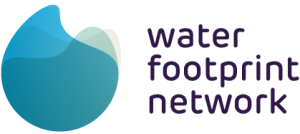The Water Footprint- A step in the Right Direction



Green Footprint Blue Footprint Grey Footprint
I am already two weeks into my internship and can feel the time slipping by so quickly. The main focus of my project is calculating the water footprint of Robusta coffee production. Water footprinting can be divided into three water sources- Green, Blue and Grey.
Green water represents the volume of rainwater consumed within a production system. This is more significant in agricultural, forestry and pastoral production processes where evapotranspiration of rainwater and water for harvesting or tree planting is referenced.
Blue water represents the supply of water required by crops through artificial methods of irrigation (e.g., sprinkler, hose, drip) sourced from wells, rivers, and/or springs. Once removed from the source, this water can evapotranspire, be incorporated into a product or become evaporated in storage or transport (Romero et al., 2016).
Grey water represents the amount of water required to absorb pollutants that form within a production process. Within an agricultural system, the level of chemical leaching from fertilizer and pesticide residues is determined by environmental factors, soil and agricultural practices (Hoekstra et al., 2011; Franke et al., 2013).
However, this methodology does not acknowledge the production of yield, a component taken into account when measuring water productivity. Both methodologies complement one another and have qualities that are equally as important. In combining the two approaches this allows us to separate the sources of water (green, blue and grey) while also measuring production of yield. This will be the approach employed to calculate the amount of water in Robusta coffee production. Take a look at the link below if you’re interested in learning more about water footprinting.
Shauna-Rose
